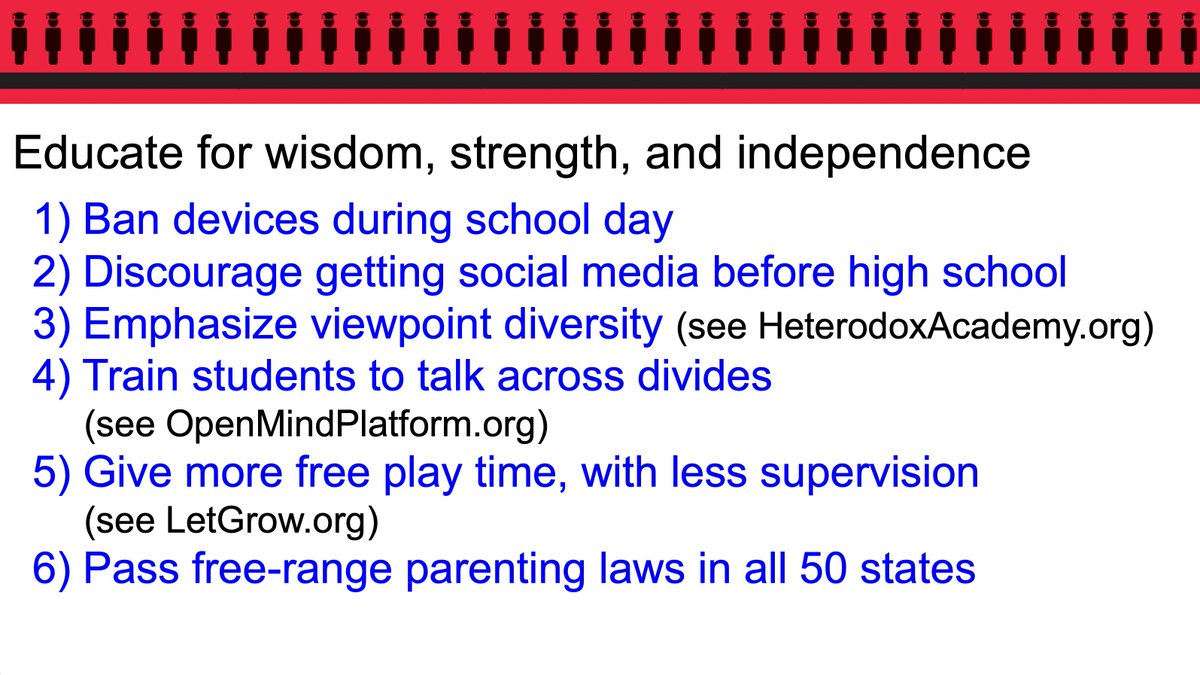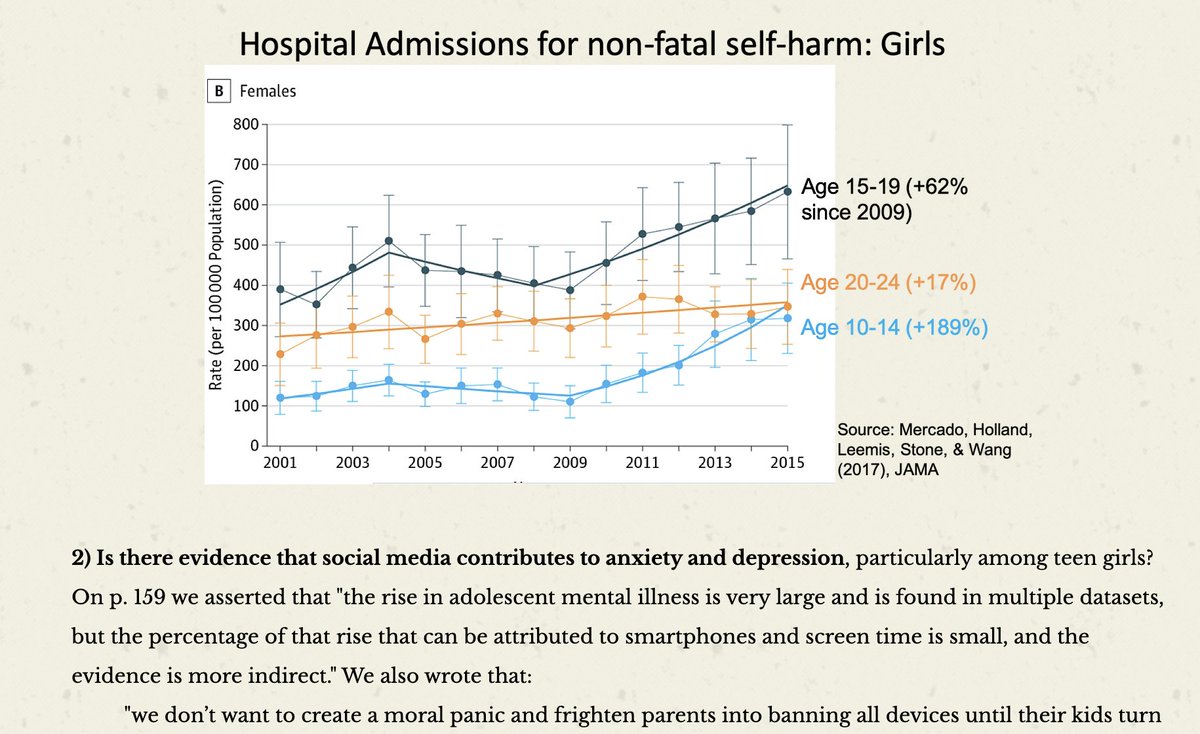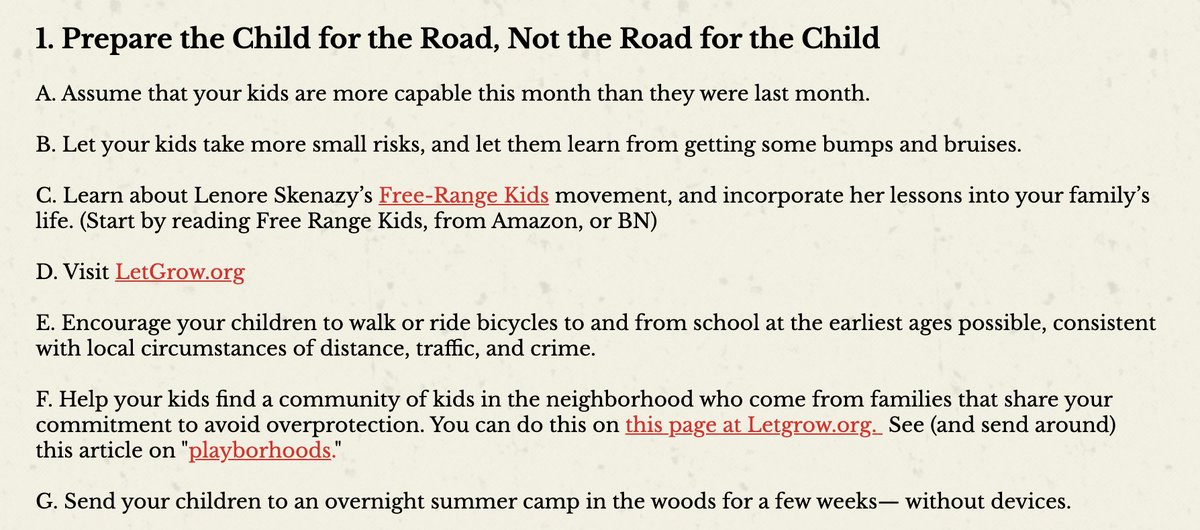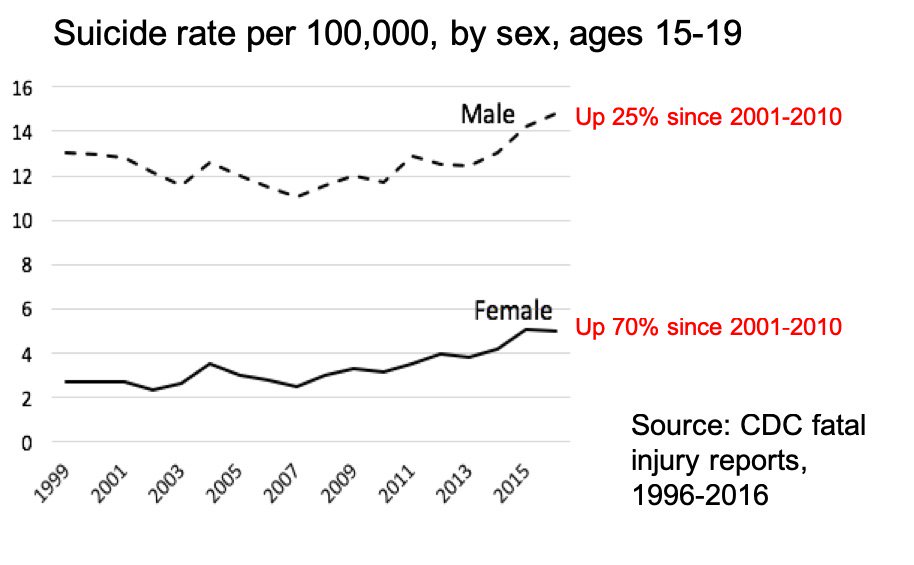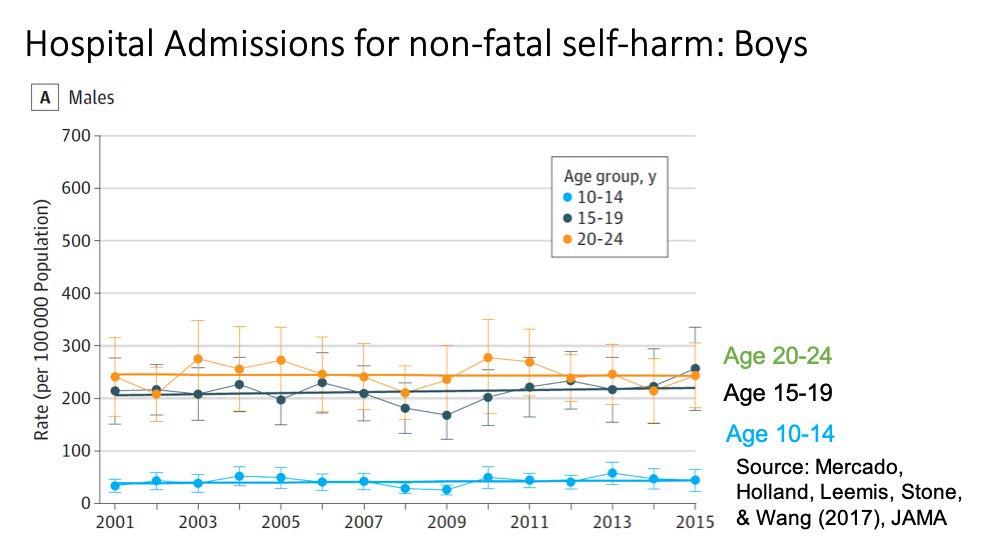
1. In The Coddling, @glukianoff and I pointed to Instagram as a main suspect in the sudden rise of depression/anxiety among Gen Z girls that began around 2012.
New report: Facebook’s own internal research supports that hypothesis.
wsj.com/articles/faceb…
New report: Facebook’s own internal research supports that hypothesis.
wsj.com/articles/faceb…
2. Some background: The increase in teen depression/anxiety is very large and sudden, around 2012, in USA, Canada, and UK. Bigger for girls. See this Google doc lit review with many graphs:
docs.google.com/document/d/1di…
docs.google.com/document/d/1di…

3. The evidence that the surge of depression/anxiety around 2012 was caused in part by social media is compelling but not definitive. Most correlational & experimental studies find a link. @jean_twenge and I compile studies here:
docs.google.com/document/d/1w-…
docs.google.com/document/d/1w-…
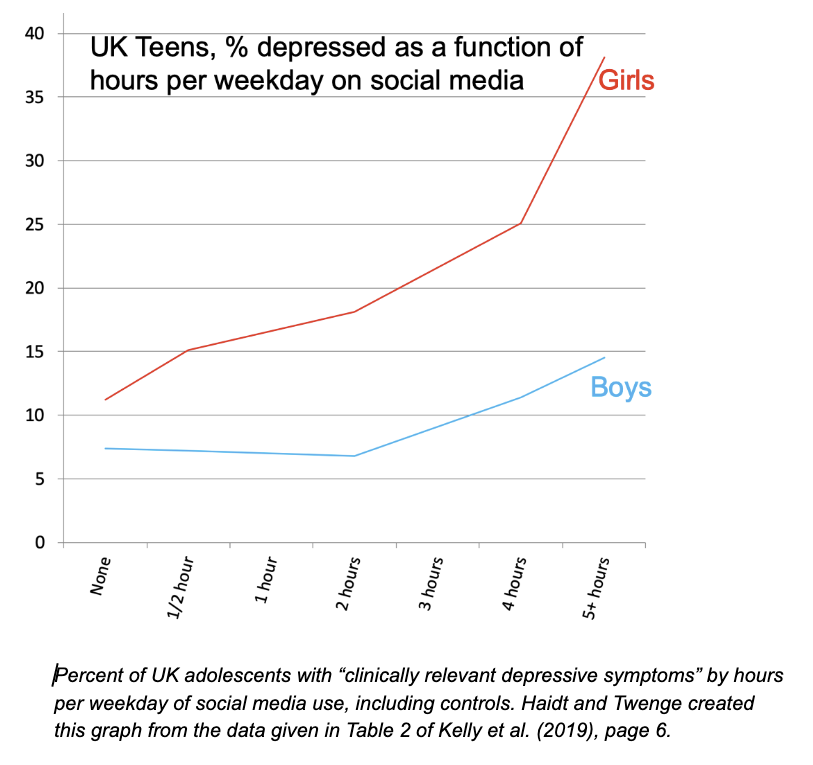
4. On social media and mental health: nearly ALL of the research assumes a dose-response model—SM harms only the user. But SM and esp. Instagram have emergent systemic effects, putting all teen girls into a prestige economy based on their appearance. 

5. The new prestige economy creates a bizarre and unhealthy social world much like an episode of Black Mirror (e.g., Nosedive), even for girls who rarely use Instagram: 

6. I can see no way to fix Instagram for minors. Any platform that encourages children to upload photos of themselves, to be rated and commented on by strangers, is likely to harm many kids. I wish I could raise my daughter in a world that had no such platforms.
7. What will Facebook do now? Their findings are only 2 years old, so they are not yet like Big Tobacco. For starters, how about two demonstrations of good faith: 1) stop the widespread use of Instagram by pre-teens, and 2) publicly renounce the plan for “Instagram for Kids”.
• • •
Missing some Tweet in this thread? You can try to
force a refresh




